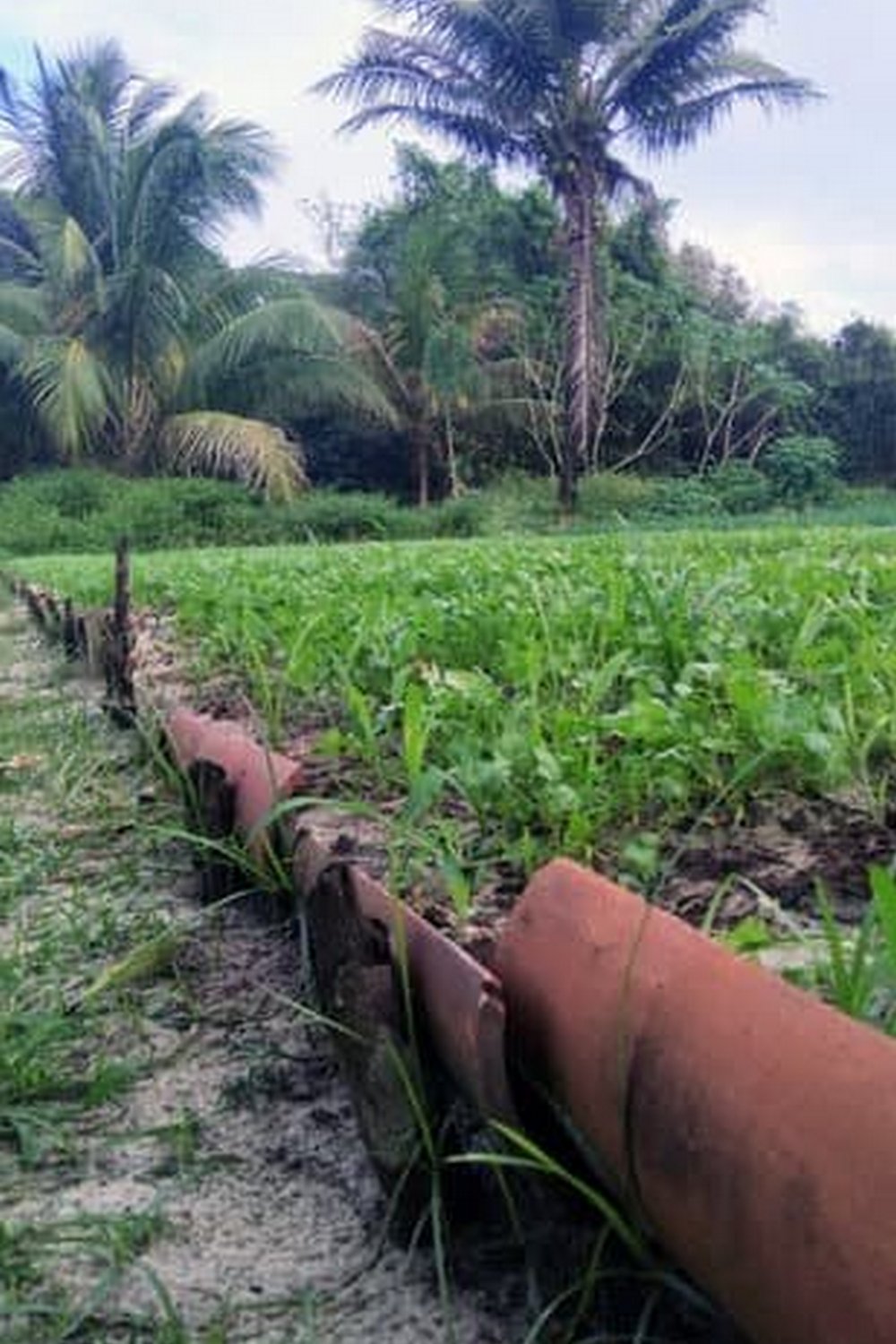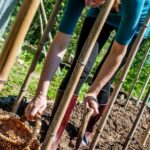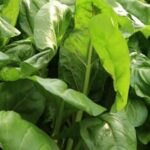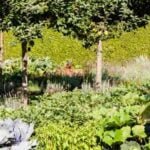Are you interested in starting your own vegetable garden but don’t have a lot of space or experience? Vegetable container gardening may be the perfect solution for beginners. This method allows you to grow a variety of vegetables in containers, making it accessible to those with limited outdoor space. In this article, we will explore the basics of vegetable container gardening for beginners and provide helpful tips for getting started.
Container gardening is a popular option for individuals who want to grow their own produce but lack the yard space for a traditional garden. With the right containers, soil, and care, you can successfully cultivate a bountiful harvest of fresh vegetables right on your patio or balcony. Whether you’re new to gardening or simply looking for a convenient way to grow your own food, vegetable container gardening offers an accessible and rewarding experience.
In this section, we will cover the fundamentals of vegetable container gardening and explain why it is an ideal choice for beginners. From understanding the benefits of this method to exploring the advantages of growing vegetables in containers, you will gain valuable insights into how this approach can transform your homegrown produce experience. So, if you’re ready to embark on your journey into vegetable container gardening, read on to discover everything you need to know to get started.
Choosing the Right Containers
When it comes to vegetable container gardening for beginners, choosing the right containers is crucial for the optimal growth of your plants. Here are some key factors to consider when selecting containers for your vegetable garden:
Types of Containers:
- Traditional Clay Pots: These are porous and allow air and moisture to pass through the walls, but they can dry out quickly.
- Plastic Pots: Lightweight and affordable, these pots retain moisture well and are easy to move around.
- Grow Bags: Made from fabric, these containers are lightweight, breathable, and promote good drainage.
Materials for Optimal Growth:
- Terra Cotta: Offers good air circulation for the roots but can lead to quick drying out of the soil.
- Plastic: Retains moisture, durable, and lightweight; great for beginners as they require less maintenance.
- Wooden Crates or Barrels: Provides insulation for the roots against extreme temperatures and looks aesthetically pleasing in any garden space.
When choosing a container for your vegetable garden, it’s important to consider the size of the mature plant, drainage holes in the bottom of the container, and the material’s ability to retain moisture. By understanding the different types and materials available, you can ensure optimal growth and success in your vegetable container gardening endeavors.
Selecting the Best Vegetables for Container Gardening
When it comes to vegetable container gardening for beginners, selecting the right vegetables is crucial for a successful and fruitful harvest. Not all vegetables are well-suited for growing in containers, so it’s important to choose plants that are compact, have shallow roots, and do well in confined spaces. Here is a beginner-friendly guide to which veggies thrive in containers:
1. Tomatoes: One of the most popular choices for container gardening, tomatoes come in many varieties that are perfect for growing in pots or hanging baskets. Look for determinate tomato varieties, known for their compact growth habits and smaller size, making them ideal for containers.
2. Peppers: Both sweet and hot peppers are excellent choices for container gardening. Compact pepper plants can thrive in pots as small as 5 gallons and offer a bountiful harvest throughout the growing season.
3. Lettuce: Leafy greens like lettuce are easy to grow in containers and can be harvested continuously by picking individual leaves as needed. They also have shallow root systems, making them well-suited for smaller pots.
4. Radishes: These fast-growing vegetables are perfect for beginners because they mature quickly and don’t require much space to grow. Radishes can even be grown in window boxes or other small containers.
5. Herbs: From basil and mint to parsley and cilantro, herbs are some of the best vegetables for container gardening due to their compact size and versatility in cooking. They can be grown on windowsills, balconies, or patios.
By choosing the right vegetables for your container garden, you’ll set yourself up for a successful growing experience while enjoying fresh, homegrown produce at the same time.
Soil and Fertilizer Tips
When it comes to vegetable container gardening for beginners, one of the most important factors for success is creating the right growing environment for your plants. The first step in achieving this is choosing the right soil. Look for a high-quality potting mix that is specifically formulated for container gardening. These mixes are lightweight, well-draining, and typically contain the right blend of nutrients to support healthy plant growth.
In addition to using a good quality potting mix, it’s also essential to provide your container vegetables with the necessary nutrients they need to thrive. This can be achieved through regular fertilization. Consider using a slow-release fertilizer or organic options, as these will provide a steady supply of nutrients to your plants over time. Be sure to follow the instructions on the fertilizer packaging to avoid overfeeding or underfeeding your plants.
Another important aspect of creating the perfect growing environment for your vegetables is proper maintenance of the soil. Regularly check for signs of compaction and amend the soil as needed with organic matter such as compost. Healthy soil is crucial for healthy plant growth, so be sure to give your vegetable container garden the attention it needs in terms of soil quality and care.
| Soil and Fertilizer Tips | Data |
|---|---|
| Choosing the right soil | High-quality potting mix formulated for container gardening |
| Fertilization | Consider slow-release or organic fertilizers |
| Maintenance of Soil | Regular checks for compaction and amending with organic matter |
Watering and Maintenance
One of the most important aspects of vegetable container gardening is ensuring that your plants are well-maintained and receive proper care, particularly when it comes to watering. Container gardens require more frequent watering than traditional gardens, as the soil in containers tends to dry out more quickly. It’s essential to establish a regular watering schedule and check your plants daily to ensure they have adequate moisture.
When it comes to watering your container garden, be sure to water the soil directly around the base of the plants. Avoid wetting the foliage, as this can make the plants more susceptible to disease. Additionally, using a watering can with a narrow spout can help you deliver water precisely where it’s needed without creating a mess. Keep in mind that the size and material of your containers can also affect how often you need to water your garden.
In addition to regular watering, proper maintenance is crucial for keeping your container garden healthy and thriving. This includes regularly checking for signs of pests and diseases, removing any dead or yellowing leaves, and providing necessary support for taller plants. By staying on top of maintenance tasks, you can prevent potential issues from arising and ensure that your vegetable container garden continues to flourish.
| Watering and Maintenance Tips | Vegetable Container Gardening for Beginners Ber |
|---|---|
| Establish a regular watering schedule | Optimal growth in container gardening |
| Water the soil directly around the base of the plants | Avoid wetting the foliage |
Sunlight and Placement
When it comes to vegetable container gardening for beginners, understanding the importance of proper sunlight and where to place your containers is crucial for optimal growth. Sunlight is essential for the process of photosynthesis, which is how plants produce their food. Without adequate sunlight, your vegetables may struggle to grow and thrive. In this section, we will discuss the significance of sunlight and provide guidance on where to place your containers for the best results.
The Importance of Sunlight
Sunlight provides plants with energy to convert carbon dioxide and water into sugars, which they use as food. When choosing a spot for your vegetable containers, it’s important to consider the amount of sunlight that area receives throughout the day. Most vegetables require at least 6-8 hours of direct sunlight to grow properly. South-facing areas typically receive the most sunlight, making them ideal locations for your containers.
Where to Place Your Containers
When deciding where to place your vegetable containers, look for areas that receive ample sunlight while also considering factors such as wind exposure and accessibility for watering and maintenance. Balconies, patios, and decks are popular choices for container gardening as they often provide suitable sunlight and are convenient for tending to your plants. It’s also beneficial to position your containers in close proximity to water sources to make watering more manageable.
Additional Considerations
Keep in mind that different vegetables have varying sunlight requirements, so it’s essential to research the specific needs of the plants you intend to grow in your containers. Additionally, monitor the sun exposure in your chosen location throughout the day and adjust the placement of your containers if necessary. By ensuring that your vegetable containers receive adequate sunlight, you’ll give them the best chance for successful growth and a bountiful harvest.
Pests and Diseases
Spotting Pests and Diseases
One of the biggest challenges that beginner vegetable container gardeners face is dealing with pests and diseases. Common pests that can invade your container garden include aphids, spider mites, slugs, and snails.
In addition, diseases such as powdery mildew, blossom end rot, and damping-off can also affect your plants. It’s important to regularly inspect your plants for any signs of damage or discoloration, as well as keep an eye out for any pests lurking on the leaves or soil.
Preventing Pests and Diseases
There are several steps you can take to prevent pests and diseases from wreaking havoc on your container garden. One of the most effective methods is to practice good hygiene by keeping your containers clean and free from debris.
Additionally, using high-quality potting mix and regularly fertilizing your plants can help boost their immune systems against potential threats. Furthermore, practicing crop rotation by changing the location of your containers each season can also help reduce the risk of recurring pests and diseases.
Treating Common Issues
If you do spot pests or diseases in your container garden, it’s important to take action promptly to prevent further damage. For small infestations of insects, you can try using natural remedies such as neem oil or insecticidal soap to control the problem without causing harm to beneficial insects like bees or ladybugs.
For diseases, removing any infected plants or leaves immediately can help prevent the spread to healthy plants. If you’re unsure about how to effectively treat a specific issue, seeking advice from a local gardening expert or nursery staff can provide you with the knowledge needed to tackle the problem head-on.
By being proactive in spotting potential issues early on, implementing preventative measures, and knowing how to treat common problems if they arise in your vegetable container garden, you’ll be better equipped to keep your plants healthy and thriving throughout the growing season.
Harvesting and Enjoying Your Homegrown Vegetables
When it comes to vegetable container gardening for beginners, the harvest is the most rewarding part of the process. All the hard work and dedication put into nurturing your plants finally pays off as you get to enjoy the fruits of your labor – quite literally. Whether you’re harvesting crisp lettuce for a fresh salad or plump tomatoes for a homemade pasta sauce, there’s nothing quite like experiencing the flavors of homegrown vegetables.
One of the best tips for a successful harvest from your container garden is to pay attention to the readiness indicators for each type of vegetable. For example, tomatoes should be harvested when they are fully colored and firm to the touch, while lettuce can be picked when it reaches a desired size. By understanding the specific characteristics of each vegetable you’re growing, you’ll be able to harvest them at their peak flavor and texture.
After harvesting your homegrown vegetables, it’s time to whip up some delicious meals using your bountiful produce. From simple salads and stir-fries to hearty soups and stews, there are countless ways to incorporate your freshly harvested vegetables into satisfying dishes.
Not only will you savor the delicious flavors of your homegrown produce, but you’ll also take pride in knowing that you nurtured these vegetables from seedlings to dinner plate. Vegetable container gardening for beginners is not just about growing food – it’s about embracing a sustainable lifestyle and enjoying the natural goodness of fresh, homegrown produce.

If you’re looking to get into vegetable gardening, or are just looking for some tips on how to make your current garden better, then you’ve come to the right place! My name is Ethel and I have been gardening for years. In this blog, I’m going to share with you some of my best tips on how to create a successful vegetable garden.





